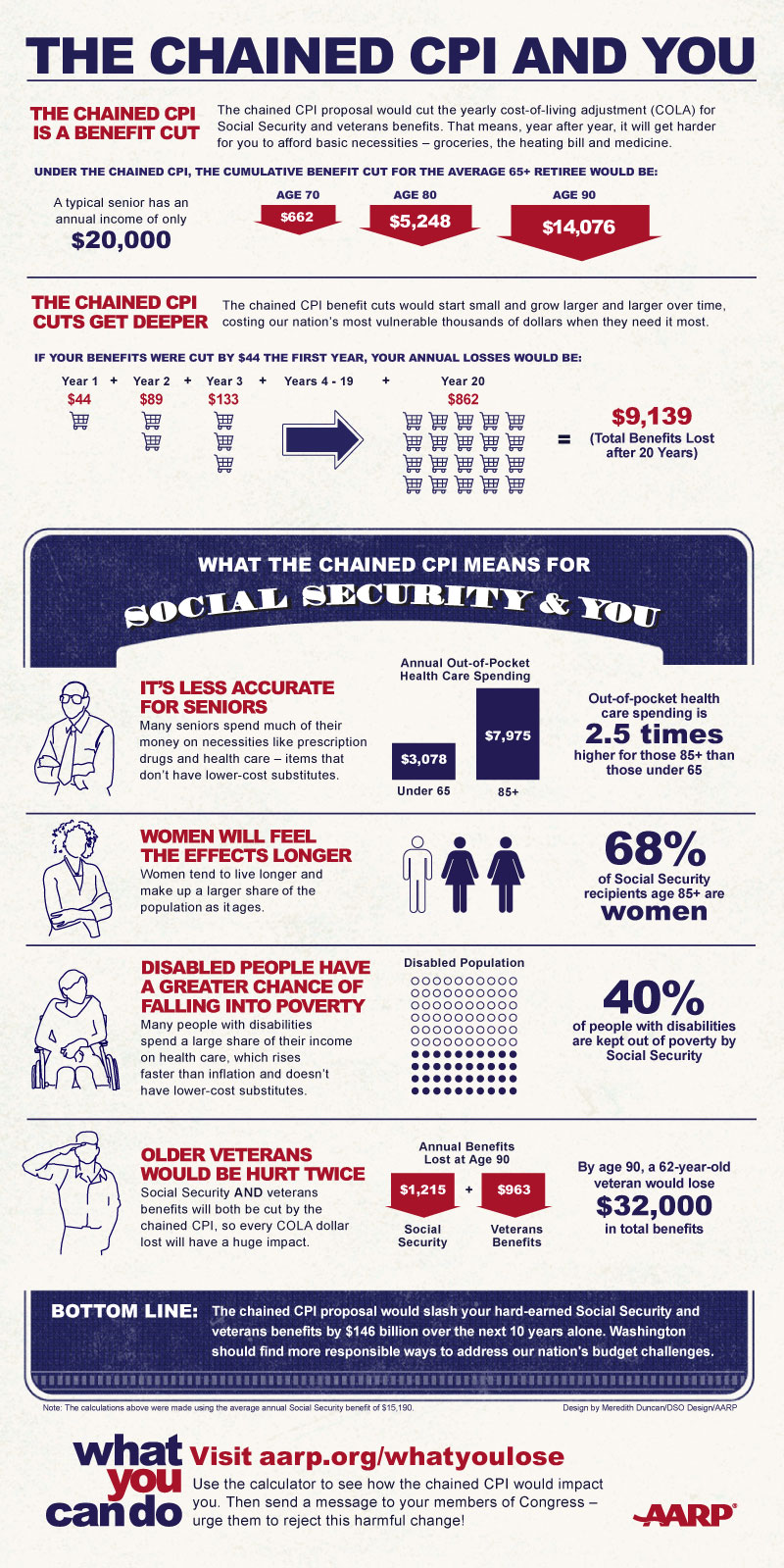
Chained CPI Infographic – click to zoom in
Chained CPI is back in the news. What does this mean for the elderly and disabled who rely on Social Security benefits? The short answer to this question is “nothing good.” Before we discuss why chained CPI is such bad news, I should explain exactly what it is.
Chained CPI is a different way of calculating the amount of inflation that occurred in a given year, and the amount that Social Security benefits will increase in response to inflation. Currently, the Social Security Administration uses the Consumer Price Index for urban wage earners and clerical workers (CPI-W). Due to the way it is calculated, chained CPI measures inflation at a lower rate than CPI-W. Chained CPI assumes that individuals have the ability to buy cheaper items in place of more expensive items – the classic example is buying pork instead of chicken or beef – in order to bring their expenses down. According to the Congressional Budget Office (which provides nonpartisan analysis for Congress), chained CPI is likely to measure inflation as being 0.25 percentage points lower than CPI-W does.
A one-quarter of one percent decrease may not sound like much. In fact, it would only result in the loss of a few dollars per month in benefits. The problems with this approach really become apparent when you think about how your benefits will be affected several years down the road. Due to the fact that you receive a smaller inflation adjustment each year, your benefits grow at a slower rate as the years go by. Eventually, this one-quarter of one percent decrease will have a very large effect.
The average age of an individual receiving disability benefits is just over 53. Most individuals who stop receiving Social Security disability benefits have their benefits stopped because they attain full retirement age and are no longer entitled to disability benefits. Based on this, we know that many individuals receive disability benefits from Social Security for a long period of time – many years in most cases. This means that the cumulative effect of the switch to chained CPI will hit the disabled hardest.
This decrease is an especially big problem when you realize how important Social Security benefits are to the disabled and retired. According to the Administration, Social Security benefits provide 50% or more of household income for 53% of elderly married couples and 74% of unmarried individuals, and provide 90% or more of household income for 23% of elderly married couples and 46% of unmarried individuals. 71.7% of all disabled workers receive 50% or more of their household income from Social Security disability benefits.
Switching to chained CPI would result in a loss of benefits to the retired and disabled – those who are least able to afford such a loss. There are news reports that a switch to chained CPI is being considered by lawmakers in Congress. You should make sure that your elected representatives know that you do not support such a switch. You can find contact information for your Congressional representatives at House.gov and Senate.gov. Let them know that reducing future Social Security benefits for the elderly and disabled is unacceptable.

Prior results do not guarantee outcomes.
Attorney Advertising.







